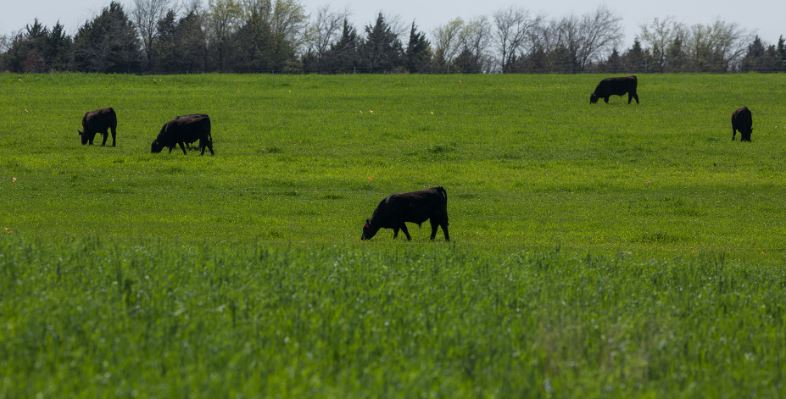
Forage brassicas have been used in the U.S. for more than 100 years. The biggest factor affecting the popularity for brassicas as forages in the U.S. may be their suitability as cover crops as well. Many producers are attracted to the idea of improving their soil health while also feeding their livestock. This has led to an increase in brassica seed availability and new varieties. Brassica crops were developed by selective breeding and crossbreeding of a few species into many forms designed for different uses as forages, vegetables, oilseeds, and cover crops. In the U.S., turnips, rape, and kale are old standby forages. Newer additions to this group include swedes (rutabagas), forage collards, mustards, radishes, and a few interspecies hybrids selected for various traits like the production of high levels of secondary compounds to combat soil pests in crop rotations as cover crops. However, if the primary reason for growing them is for grazing, be sure the variety purchased was developed for that purpose.
The strength of brassicas as a forage crop is their cold tolerance allowing them to provide high-quality pasture well into the fall and winter when most other forages are dry and brown. Little new growth will occur after temperatures fall below freezing at night, but existing forage remains and holds its nutritional value very well. Brassicas extremely high moisture content makes preservation as a hay crop impractical. Brassicas that form big bulbs, such as turnips, swedes, and radishes, can be grazed but are less suitable for multiple grazing’s than varieties that do not elevate their crowns on top of bulbs. However, there are turnip and radish varieties selected for grazing that have an increased proportion of top growth relative to the bulb and livestock readily learn to dig up brassica forage bulbs. Another strong point is a fast growth rate that, under good growing conditions, can provide emergency forage in as little as 45 days. Forage brassica yields are quite variable, ranging from 2 to 5 tons of dry matter per acre depending on species, variety, and environmental conditions.
Nutritionally, forage brassicas behave like a high moisture concentrate feed. Crude protein is typically sufficient to meet the needs of livestock on pasture. Brassicas are naturally low in fiber compared to grass and legume pasture. Brassica neutral detergent fiber (NDF) can range from 11 to 44 percent and has NDF digestibility up to 70 percent. Brassicas that form stems (rape and kales) will be at the higher end of the range, and leafy brassicas like turnips and radish will be at the lower end. Due to their high nutritive value, brassicas can produce excellent animal performance but require adjustments to grazing management. Animals should be introduced to brassica-based pastures slowly to allow the rumen time to adapt and should never be grazed on pure brassica pastures. Effective fiber can be provided by planting brassicas in mixtures with small grains (oats, cereal rye, triticale, or wheat) or other forages, supplementing pastures with hay or providing access to a separate grass pasture. A good rule of thumb is to limit brassicas to no more than 70 percent of the diet.
Forage brassicas do best on productive, fertile, well-drained soils and do not tolerate waterlogging. They are responsive to nitrogen (N) fertilizer up to 100 pounds per acre, which should be applied in split applications before planting and about three weeks post-planting. Phosphorus and potassium should be applied according to a soil test. Seeding rates are 2 to 4 pounds per acre for turnips, 4 to 5 pounds per acre for swedes, 5 to 6 pounds per acre for rape and kale, and 4 to 20 pounds per acre for radish.
Although infrequent, brassica crops can cause animal health disorders if grazing is managed improperly. Most brassica-related disorders in cattle tend to occur during the first two weeks of grazing while adjusting to the forage. The primary potential disorders are polioencephalomalacia or PEM, hemolytic anemia (mainly with kale), nitrate poisoning, and pulmonary emphysema. In general, potential problems can be minimized by feeding brassicas as no more than 70 percent of the dietary dry matter intake, introducing animals to brassica pasture slowly, never turning hungry animals onto a brassica pasture, providing a trace mineral supplement that includes iodine, not grazing immature rape (safe maturity is indicated by a reddish/bronze tint to leaves) and avoiding excessive N and sulfur fertility.
References
http://extension.msstate.edu/sites/default/files/publications/publications/P2845_web.pdf
https://www.uaex.uada.edu/publications/pdf/FSA61.pdf

















